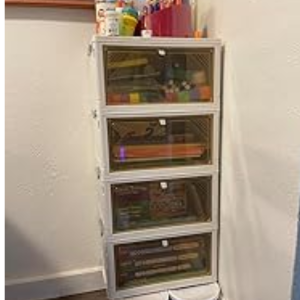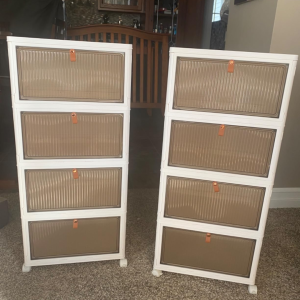Can you hide a kitchen vent pipe using stacked cabinets? Absolutely! It’s a fantastic way to make that unsightly ductwork disappear, creating a seamless, stylish kitchen. Many homeowners grapple with exposed vent pipes, especially in older homes or when making significant layout changes. Luckily, using stacked cabinets is a popular and effective method for kitchen vent pipe concealment. This approach not only addresses the visual issue but can also enhance your kitchen’s overall design. I’ve seen this work wonders in countless kitchen remodels, transforming a problem area into a design highlight.

Why the Exposed Pipe Problem?
Kitchen vent pipes are essential for removing cooking odors, smoke, and grease. They connect your range hood to the exterior of your house. In many cases, these pipes run up a wall or across a ceiling where they’re easily visible, which is not ideal for many design aesthetics. This is because their primary function is to move air efficiently, with the aesthetics often being secondary. Older homes might have poorly planned routes for these pipes, and renovations can sometimes complicate matters further. The good news is that a smart stacked cabinet design can not only solve this but actually make your kitchen look even better.
The Stacked Cabinet Solution: A Step-by-Step Guide
So, how exactly does the stacked cabinet vent solution work? It’s all about extending cabinetry up to the ceiling, creating a built-in look that cleverly conceals the vent pipe. Here’s a breakdown of the process:
1. Planning and Measuring
- Assess the Existing Ductwork: First, you need to see exactly where the pipe runs. Measure its diameter, how far it sticks out from the wall, and how high it goes. Consider both the visible sections and any concealed portions in the walls. This initial assessment is crucial.
- Cabinet Measurements: You need precise measurements of your existing lower cabinets and the height of your ceiling. This will determine the height and depth of your stacked cabinets. Also consider where your range is placed, this ensures your venting is in an optimal location for effectiveness and doesn’t move the cooktop placement unintentionally.
- Design Considerations: Think about the overall style of your kitchen. Will the stacked cabinets have glass doors, open shelving, or solid doors? What kind of molding will be used to create the built-in effect? The design here will dictate the overall look.
2. Selecting the Right Cabinets
- Matching Styles: Aim for upper cabinets that perfectly complement your existing ones. This is vital for a cohesive look.
- Depth: Ensure your new upper cabinets are deep enough to fully enclose the vent pipe without being too obtrusive or jutting out awkwardly. A typical depth might be 12-15 inches, but adjustments can be made based on your specific pipe measurements.
- Construction: Pay attention to the construction material and quality. Look for sturdy cabinets that can be securely installed. You may need to reinforce any cabinets near high heat areas for additional safety.
3. Installation Time: The Details Matter
- Framing: If your pipe sticks out from the wall quite a bit you might need to build a simple frame around it to give the new cabinetry something to securely attach to. This frame will also keep the pipe from touching the cabinet’s back. This will also make a more even surface for the cabinet to attach.
- Cabinet Installation: Install the lower set of stacked cabinets as you normally would. Then carefully fit the upper set onto the lower. Precision is vital here for a seamless finish.
- Creating the Enclosure: Ensure the cabinets completely hide the pipe. There should be no gaps where the ductwork might be visible. You may need to modify the inside of the cabinet to accommodate the ductwork.
- Final Touches: Secure the cabinets to each other and the wall. Then apply a matching trim or molding to achieve a built-in look. This molding is an essential step, as it bridges gaps and creates a polished finish.
4. The Importance of Ventilation Considerations
- Ductwork Modification: Sometimes, the existing ductwork needs to be slightly altered to fit inside your chosen cabinetry design, as it may be slightly off-center. This should be done carefully by a professional to maintain proper ventilation. You should verify with the local construction codes or requirements for any type of ventilation system to be installed.
- Proper Sealing: Sealing all joints and connections in the ductwork is crucial to prevent air leaks and ensure your range hood is functioning effectively. This is especially important where it passes through the stacked cabinet structure.
Options Beyond Traditional Stacked Cabinets
While stacked cabinets are a great solution, there are other creative methods for hiding kitchen ductwork if the traditional method doesn’t fit your style or needs:
- Custom Built Enclosures: A carpenter can build a box-like structure that seamlessly blends with the cabinetry. This can be ideal if your ductwork is unusually shaped or positioned.
- Bulkheads: Build a structure from drywall to box in the ductwork. It’s more permanent but can provide a smooth, paintable surface. Bulkheads are great for a minimalist and modern kitchen design.
- Floating Shelves: If the ductwork isn’t too large, strategic placement of floating shelves can camouflage the pipes while adding storage and display space.
- Decorative Covers: Chimney vent pipe covers are commercially available in various styles and finishes. These are best used for simpler installations or when other options aren’t feasible.
Kitchen Remodeling Tips to Remember
No matter what method you choose, these tips will help your kitchen vent pipe concealment project run smoothly:
- Plan Thoroughly: Don’t start your project until you’ve meticulously planned and measured everything. In my experience, a little extra planning upfront saves a lot of headaches later.
- Consult Professionals: If you are not a skilled DIYer, consult an expert for help. Professionals can address potential ventilation issues and ensure structural integrity.
- Consider Lighting: When adding stacked cabinets, think about how they’ll affect your kitchen lighting. You might need to add under-cabinet lights or recessed lighting to brighten the space.
- Material Choice Matters: The materials you select for both the cabinets and any structural additions need to be durable and compatible with your kitchen’s environment.
- Don’t Ignore the Details: Pay close attention to finish work, this can be what elevates a good kitchen into a great one. This includes molding, trim, and painting.
Cabinet Chimney Integration: A Closer Look
Cabinet chimney integration refers to the practice of blending the vent pipe cover into the overall cabinetry design, so it looks intentional and not tacked on. When you are creating a stacked cabinet vent solution you need to plan for how the ductwork meets the ceiling. Here’s how to make it work seamlessly:
- Custom Panels: You can use custom panels to build a seamless look between the top of the stacked cabinets and the ceiling, hiding the vent pipe completely.
- Matching Materials: Use the same paint, stain, and wood to create a cohesive look. This consistency helps the eye move smoothly across the entire structure.
- Molding Selection: Using molding, especially crown molding at the top, can help tie the stacked cabinet structure together with the rest of your kitchen.
- Built-in Appearance: The ultimate goal is for the chimney vent pipe cover to appear as a natural extension of your cabinetry, like it was always meant to be there.
Concealing Kitchen Exhaust: Making It Invisible
The idea is to make the concealing kitchen exhaust blend into the room’s architecture. The kitchen should be a place of enjoyment, and it shouldn’t be ruined by a giant pipe running through it. Here are several design ideas you can use when working on the exhaust:
- Creating a Focal Point: If you can’t completely hide the ductwork, use a unique chimney vent pipe cover to turn it into a statement piece. Think about metal coverings or interesting patterns.
- Hiding in Plain Sight: You can camouflage your ductwork with paint or wall coverings so it blends seamlessly with the walls.
- Integrating with Design: Find design inspiration from popular kitchen aesthetics to get an idea for what is stylish, practical, and can be personalized to your liking.
- Use of Color: Matching the paint to the wall color can camouflage the ductwork or even an accent color can make it part of the design. This is especially helpful if you can’t fully integrate the vent into the design.
- Lighting: Using lighting to emphasize features can draw the eye away from an unwanted vent cover, you can place accent lighting above the cabinets or place LED strips underneath the cabinet to draw the eye downward.
Ductwork Hiding Strategies: Beyond the Usual
There are several ductwork hiding strategies beyond stacked cabinets, these can be implemented depending on your individual needs.
- Drop Ceilings: This is useful if you have a ceiling that’s too high and need to lower the height to accommodate ductwork.
- Wall Recessing: If possible, you can recess the ductwork into the wall cavity, which will make it look almost invisible.
- Strategic Placement: Sometimes, simply adjusting the ductwork path slightly can significantly minimize its visibility.
- Flexible Ducting: Flexible ducting can be used to navigate tight spots or obstacles. This helps your vent pipe path be more adaptable to your needs.
- Combination Approach: Combining multiple strategies is sometimes needed to properly hide the ductwork in a more complex space.
Custom Kitchen Ventilation: Getting It Just Right
Custom kitchen ventilation ensures your system is designed specifically for your space and needs. It goes beyond simply installing a standard vent hood. Here’s what it involves:
- Professional Assessment: A ventilation specialist can assess your specific needs and recommend the best solutions.
- Size and Power: They will make sure your vent hood is correctly sized and has the right amount of power to effectively remove smoke, grease, and cooking odors.
- Custom Ducting: Ductwork that is created to fit the dimensions of your kitchen, ensuring optimal flow and minimal noise.
- Integrated Systems: Custom kitchen ventilation often involves integrating the ventilation system into your cabinetry and decor for a seamless look.
- Material Choices: You can choose materials for ductwork that are either durable or aesthetically pleasing, this depends on what part of the system is exposed.
The End Result: A Seamless Kitchen
By carefully planning and implementing the right approach, you can transform your kitchen by making that vent pipe disappear. The stacked cabinet vent solution is a popular and practical way to accomplish this goal. With the right techniques and attention to detail you can easily conceal that distracting ductwork and create a kitchen that is both beautiful and functional. Remember, a well-planned kitchen is a joy to be in.

Frequently Asked Questions (FAQ)
Q: Can I DIY this project, or should I hire a professional?
A: It depends on your comfort level with DIY projects and your familiarity with cabinetry installation, light construction and ventilation systems. If you have experience with these types of projects, you might be able to manage the installation, framing and finishing. If you are not skilled in this area, then it’s highly recommended to seek the help of a professional. They’ll ensure your ventilation is up to code and is functioning properly and safely.
Q: What if my vent pipe is unusually large or oddly shaped?
A: Oddly shaped or large vent pipes can pose additional challenges. In such cases, you might need to consult with a carpenter or contractor to create custom enclosures or design around the space. A professional can offer several ductwork hiding strategies that you might not have considered.
Q: Will adding stacked cabinets make my kitchen feel smaller?
A: If done correctly, stacked cabinets can actually make a room feel taller by drawing the eye upward. Using glass-fronted cabinets can also reduce the visual heaviness. The height and proportion of the cabinets in relation to the room’s size is an important factor for the kitchen design.
Q: How do I maintain my stacked cabinets after installation?
A: Regular dusting and wiping down your stacked cabinets should keep them in good condition. Choose cleaning products that are appropriate for your cabinetry material, and avoid harsh chemicals that might damage the finish. Inspect the molding and caulking regularly to ensure it is in good condition.
Q: Can I still access the vent pipe if it’s hidden behind stacked cabinets?
A: Access will be limited once the cabinets are installed, which is another great reason to ensure the ventilation system is installed correctly and maintained to reduce any unexpected repairs. The ductwork will be easily accessible from the range hood side and outside the exterior. If you anticipate the need for regular access, design the cabinets so that one panel or door can be removed easily.
Q: How much does this kind of project typically cost?
A: The cost of hiding your kitchen vent pipe with stacked cabinets can vary widely, based on cabinet type, size, design, complexity of installation and also your choice to DIY or hire a professional. A simple project might be a few hundred dollars, but it could easily escalate to several thousands for custom work. It’s best to get multiple quotes and have a clear understanding of all costs before starting the project.

I’m a writer and culinary expert with over 10 years of experience in the kitchen. As a graduate of the Institute of Culinary Education and a passionate home chef, I created KitchenBreez.com to share my knowledge of kitchen techniques, cooking tips, and the best kitchen gadgets. Whether you’re a seasoned cook or just starting, my goal is to help you make your time in the kitchen more efficient and enjoyable.
